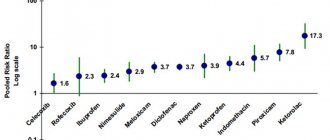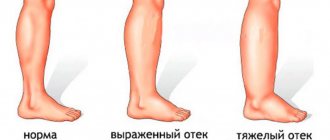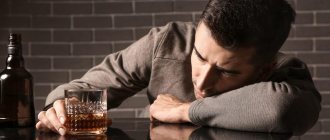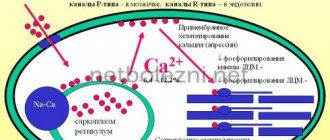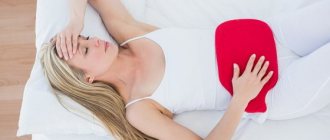December 06, 2020
Seasickness, kinetosis or motion sickness - a feeling of nausea and due to monotonous vibrations (people first encountered this phenomenon during sea travel, hence the name)
Seasickness, kinetosis or motion sickness is a feeling of nausea due to monotonous vibrations (people first encountered this phenomenon during sea travel, hence the name). Seasickness can occur not only on water transport, but also in a car, bus, train, or plane.
Women are more likely to suffer from seasickness than men. But children from 2 to 12 years old suffer most from seasickness (81% of children suffer from seasickness at this age). Approximately 5-15% of the population suffers from motion sickness throughout their lifetime. Although in particularly unfavorable conditions (with strong pitching), anyone, even an experienced sailor, can get motion sickness.
Onset is often subtle, with drowsiness, yawning and decreased alertness, and symptoms progress through cold sweats and pallor, salivation and sometimes headache, to nausea and vomiting. Once the triggering movement stops, symptoms usually disappear completely within 24 hours. Seasickness isn't actually life-threatening, but it can ruin your travel experience.
Symptoms
Typically, it starts with milder symptoms, such as yawning or increased salivation, and then the condition begins to worsen. Cold sweat appears, the head feels dizzy and hurts, sudden fatigue sets in, and it all ends with nausea and, possibly, vomiting.
During the first days at sea, many also complain of problems with concentration. 33% of respondents in one of the studies studying the phenomenon of “seasickness” complained of drowsiness, a quarter of lethargy, the vast majority (79%) of nausea, and half of vomiting. 86% of those who ignored the first signs of seasickness worsened, leading to severe bouts of vomiting.
4.Medicines for motion sickness
There are also medicines for motion sickness
. Some of them are sold without a prescription, others can be prescribed by a doctor. These anti-motion sickness medications will help reduce nausea and prevent vomiting. Moreover, most drugs help better if they are taken in advance, some time before the trip. The way motion sickness medications work varies. Some drugs are sedative and minimize the effect of movement. Others simply help with nausea.
Some people recommend non-medical remedies for motion sickness - capsules with powdered ginger, special bracelets for motion sickness. In fact, all these methods are safe, and you can try them out. But there is no medical evidence that all these remedies for motion sickness really help.
Causes of seasickness
The causes of seasickness are still the subject of scientific research. According to the theory of V.I. Voyachek, the leading role in the occurrence of motion sickness belongs to the receptors of the vestibular apparatus. These receptors respond to changes in body movement and transmit signals about the strength and nature of these accelerations to the brain.
Another cause of seasickness is a conflict between signals that enter the central nervous system from the vestibular system and the organs of vision. For example, such a conflict can arise at the moment of rocking, when a person is inside a ship or a train carriage and does not see the horizon, at this moment the vestibular apparatus registers repeated movements, and the eyes see stationary objects. Additional factors that can provoke or intensify motion sickness: psychological factor (our fears and worries); the smell of cigarettes, tobacco; stuffy room; alcohol abuse; overwork.
Motion sickness syndrome or vestibulo-vegetative syndrome is called “motion sickness” [1]. This name is still very widespread today. Movement sickness (MD) is a normal, universal physiological response to an unusual sensation of movement [2]. There are several forms of motion sickness that occur during various forms of movement: seasickness - when sailing on sea and river vessels, air sickness - when flying on airplanes and helicopters, railway sickness - when riding trains, car sickness - when driving cars. Motion sickness can occur even during a strong and prolonged earthquake [3].
Space motion sickness is a specific form; it takes place in microgravity conditions. The development of symptoms of the disease during flight was observed to varying degrees of severity in approximately 50% of astronauts. These symptoms usually smoothed out or disappeared within 6 days of the flight. Some cosmonauts also showed signs of space motion sickness on the first day after returning to Earth. It is important to note that at present it is not yet possible to reliably predict the severity of MD symptoms in astronauts during flight. To date, there is no firmly established mechanism for the occurrence of space sickness [4].
Sea and air sickness have been studied in most detail. Seasickness is caused by the rocking of the ship. There are three types of ship rolling: sideways or transverse, pitching or longitudinal, and vertical. Usually these types of ship motion occur in combination [3]. In the case of lateral rolling, the maximum angular acceleration reaches no more than 3°/s2, while rectilinear acceleration is expressed as 0.05 g; with keel acceleration - angular acceleration reaches 2.8°/s2, linear acceleration - 0.3 g; with a typical dead swell (vertical movements), these values will be respectively equal to 0°/s2, 0.2 g. If we compare these values with the minimum values that can cause irritation of the semicircular canals and otolithic apparatus, it turns out that with a threshold of irritation of the semicircular canals equal to an average of 2-3°/s2 (V.I. Voyachek, A. van Rossem, W. Mulder [cited from 3, 5]), and at a threshold of otolith irritation equal to 0.01 g, irritation of the semicircular canals did not exceed or barely exceeded the threshold; adequate irritation of the otolithic apparatus was many times greater. Thus, during pumping, the semicircular canals were irritated, if at all, then only to a minimal extent, while irritation of the otolithic apparatus reached a value significantly exceeding the irritation threshold. With irritation of the otolithic apparatus V.I. Wojacek [5] associated the appearance of symptoms of seasickness. Studies have confirmed that vertical vibrations of the vessel (jerky movements) at a frequency of 0.16 and 0.2 g (10-12 cycles per minute) provoke motion sickness. J. Lauter and Mj. Griffin (cited from [6]) pointed to a wider range of provocative frequencies, the vertical vibrations of which range from 0.1 to 0.5 g (6-30 cycles per minute).
The pitching of an aircraft is its movement around the longitudinal axis when one wing rises while the other descends, and vice versa. During flights, motion sickness can occur during the so-called “bumpiness”, when the aircraft “yaws” or when it performs several successive maneuvers [3].
When performing most flight maneuvers, adequate stimuli of the otolithic apparatus are involved and, it would seem, the reflex activity of the pilot should be entirely under the influence of the vestibular function. In those cases when centrifugal force is not involved and there are no kinesthetic impulses, the ear labyrinth can play a significant role in orientation, as happens during roll, tilt, twist, and when flying with eyes closed. However, it turned out that the body’s response to mechanical stimulation is somewhat more complex, since these forces act not only on the otolithic apparatus, but also on the entire organism as a whole. It is believed that irritation of the receptors of internal organs is no less important in the genesis of BD than changes in the functional state of the labyrinth [5].
Laboratory and experimental studies have shown that the combination of rotation and pitching with small vertical oscillatory movements, which by themselves did not cause MD, together provoked severe symptoms of motion sickness. This indicated a nonlinear interaction between vertical oscillations, pitching, and rotation.
Recent advances in the study of BD are associated with the use of stimulation technologies. OBD has been observed when operating in systems that exhibit an optical description of inertial motion, such as flight or driving simulators and other virtual environmental systems. The development of disease symptoms varied depending on the intensity of the stimuli and the susceptibility of the individual. Individuals with nonfunctioning labyrinths were immune to motion sickness under all test conditions, even after prolonged exposure to rough seas.
Bilateral vestibular and labyrinthine destruction in subjects resulted in immunity to motion sickness. It has been established that vision does not play such an important role in the development of BD, since blind subjects were susceptible to it [2]. Interestingly, blindfolded subjects showed minimal manifestations of the disease. The positive effects of blindfolding have been observed on swings, during parabolic flight and in cars. The study found that not only does motion sickness affect the performance of a mental task, but also, conversely, the performance of a given task can influence motion sickness. Completing the task reduced the severity of symptoms.
The vestibular system plays an important role in the development of AD symptoms, while visual information is only a modulating factor. This is evidenced by the fact that blind people may experience symptoms of motion sickness [7], whereas those with bilateral labyrinthine defects show only mild signs of visually evoked MD, with no direct stimulation of the ampullary or otolithic receptors being excluded. This suggests that visual inputs couple to the vestibular stimulus and enhance central vestibular activity even in the absence of the vestibular stimulus. In experiments with monkeys, it was proven that optokinetic stimulation causes modulation of the bioelectrical activity of the vestibular nuclei. If tonic activation of neurons in the vestibular nuclei is not supported by primary vestibular afferentation, a central vestibular response to an optokinetic stimulus does not occur. Repeated stimulation leads to a weakening of symptoms and even their complete disappearance. For most people, such adaptation can occur after 2-3 repeated stimuli. Habituation is a learning process for the central nervous system that reduces sensitivity to storms. It persists even with rare trips to sea at intervals of up to several weeks. The habituation caused by optokinetic stimulation lasts from 1 month to 1 year, it is possible with frequently repeated stimuli and is very specific. However, with a significant increase in the intensity of stimulation, adaptive mechanisms turned out to be ineffective and symptoms of BD reappeared [2].
The following theories of the etiology and pathogenesis of BD are distinguished:
— According to the theory of “neural failure” (cited from [8]), it is believed that BD is the result of the receipt of conflicting information within the multimodal sensory system. The functioning of this system determines the position and movement of the individual relative to the environment. A “neural malfunction” can occur within a simple sensory system, such as intralabyrinthine (canal-statolith) misalignment, or two or more sensory systems (for example, visual-vestibular interaction). The “neural failure” theory is the most widely accepted in explaining the pathogenesis of BD.
— The presence of asymmetrical masses of otoconia in vestibular receptors explains the mechanism of development of BD R. Baumgarthner et al. (hereinafter cited from [2]). It was discovered that when Coriolis forces act on fish swimming in water, some of them behave passively. It turned out that in these individuals there is a pronounced difference between the weight of the otoconium masses of the right and left vestibular receptors. There is no such difference in active fish.
— There is also a theory of overexcitation of the vestibular nuclear complexes with the development of vestibular dysfunction in the form of nystagmus, activation of the oculocardial and vagal reflexes (S. Ebenholtz).
— According to the theory of cerebral hypoperfusion, changes in cerebral hemodynamics are important in the development of BD [9].
— M. Gupta explains the development of BD by overexcitation of the trigeminal sensory system, similar to what is observed with migraine pain paroxysm. This, according to the authors, combines the symptoms of MD and migraine.
— The theory of subjective vertical conflict was proposed by W. Bles et al. It assumes that all situations that cause MD occur on the basis of integrated information from the eyes, vestibular system and proprioceptors.
— G. Riccio and T. Stoffregen hypothesized that BD is caused by instability in postural control of the body. This theory suggests an increase in cases of MD when waves overlap with physiological and spontaneous body vibrations during movement in the frequency range of 0.1-0.3 Hz.
— The theory of genetic determination is based on the recognition of a significant genetic contribution to the heritability of motion sickness factors [10]. Twin studies have been conducted to elucidate the influence of genetic and environmental factors on the occurrence of BD. B. Finlay et al. put forward a postulate about hereditary differences in autonomic responses in different people.
— The key role of overexcitation of the autonomic nervous system in the pathogenesis of motion sickness has been noted by many researchers [11]. The majority of people susceptible to motion sickness had bradycardia (67%), decreased systolic (87%) and diastolic (36%) blood pressure, and a positive oculocardiac reflex (94%). These changes were considered as a consequence of a decrease in the tone of the sympathetic or increase in the tone of the parasympathetic parts of the autonomic nervous system [11].
— According to the theory of neurointoxication proposed by M. Treisman, BD is an accidental by-product of the effects of neurotoxins on the body and the function of vomiting is to get rid of these toxins. C. D. Wood and A. Graybiel explained these suggestions by the pharmacological model and the effects of anticholinergic and sympathomimetic drugs in preventing motion sickness.
— Confirmation of the theory of ethnicity was a study showing that Chinese subjects were more susceptible to the effects of Coriolis acceleration and visual-vestibular conflict during pseudo-rotation than Caucasians [12].
Clinical picture of BD.
The initial signs of BD are malaise, discomfort in the epigastric region, nausea, and vomiting. At the same time, paleness of the facial skin is detected, especially around the mouth, accompanied by cold sweat. Drowsiness and fatigue may persist for many hours after the end of the motor stimulus. Salivation, a feeling of heat, non-systemic dizziness, and vomiting appear [2]. Clinically expressed variants of BD can be severe, moderate or mild. A severe degree is characterized by active manifestations of the gastrointestinal tract, disturbances in the functioning of the cardiovascular and nervous systems, as a result of which a person’s performance sharply decreases. The patient’s subjective feelings are extremely painful and are well illustrated by the long-known saying: “At the beginning of seasickness, they are afraid to die, and if it drags on, they want to die.” With a moderate degree, the symptoms of motion sickness appear less noticeably than with a severe degree. In mild cases, dizziness, nausea, slight loss of appetite, some lethargy, and apathy are observed [3].
Neurological manifestations of motion sickness are characterized by wide clinical polymorphism. They can be combined into four groups of syndromes: vegetative-vascular dystonia, transient asthenia, interhemispheric pyramidal asymmetry and diffuse neurological microsymptoms. The first and second syndromes largely determine physical and mental performance. The third and fourth have an important signal and prognostic significance and reflect a qualitatively new stage of the influence of alternating accelerations on the body. These syndromes are associated with the appearance of pronounced disorders of higher nervous activity and organic neurological symptoms, changes in cerebral hemodynamics [13].
Long-term motion sickness leads to apathy, depression and a decrease in the ability to cognitive and psychomotor activities, known as sopit syndrome [2, 14]. In Russian-language literature, the term “hidden motion sickness” is more commonly used. Sopit syndrome can develop in isolation from the classic symptoms of BD [2, 15].
About 25% of pilots reported symptoms that lasted more than 1 hour after a simulated training flight, and about 8% reported symptoms that lasted more than 6 hours. Typical symptoms included eye strain, fatigue, drowsiness, sweating, headache, and difficulty concentrating. Approximately 4.6% developed long-term effects, including balance problems, difficulty concentrating and sleeping [6].
MD rarely occurs in children under 2 years of age. It peaks between the ages of three and twelve years, with a gradual decrease after this age.
Women are thought to be more susceptible to BD than men. It is assumed that this is due to the state of the female endocrine system. Studies have shown that susceptibility to BD was highest on day 5 of the menstrual cycle, with a tendency to decrease by days 12 and 19. The risk of developing HD decreased significantly by premenstrual day 26. However, it is unlikely that this can fully explain the greater susceptibility throughout the menstrual cycle. According to some data, women have higher rates of susceptibility to BD than men (1.7:1) in all age groups and increase during menstruation [2]. However, a study of 376 Italian Air Force cadet pilots (336 men and 40 women) did not reveal significant differences in susceptibility to BD between men and women [16].
DB diagnostics.
Since the 90s of the last century, works devoted to the study of vestibular dysfunction in BD have analyzed vestibulo-oculomotor reactions under various conditions [17–20], and studied the influence of vestibular influences on the function of other analyzers [21–23]. Vertical vestibulo-ocular and cervico-ocular reflexes were also studied [24-29], as well as the possibility of relieving vestibulo-vegetative disorders in BD with various pharmacological agents [1, 30, 31]. Vestibular function was studied in a state of weightlessness [32], the effects of overload on sensory systems [33], indicators of vestibular function were studied with minimal supporting tactile and proprioceptive afferentation [19, 20], with a reduced partial oxygen tension in the inspired air [34].
Space DB is a special form, significantly different from its other forms. If, at the stage of entering outer space, significant loads arise on the vestibular, cardiovascular, gastrointestinal and other systems of the operator, then under zero-gravity conditions the function of the labyrinth and, in particular, the otoliths is turned off. Space database is the only form of database that is so thoroughly monitored and analyzed. Researchers sought to determine the effects of long-term spaceflight on spatial orientation. Optokinetic stimulation in microgravity conditions has shown that vestibular and oculomotor processes of adaptation to microgravity occur not only immediately after the transition to a state of weightlessness, but continue subsequently [35].
Studies carried out during space flight showed that in the first days of being in weightlessness (2nd and 5th days) a significant change in vestibular function was detected. Destabilization of the oculomotor function (spontaneous nystagmus, increased oculomotor activity of a saccadic and smooth nature), inhibition of the tracking function of the eyes when exposed to optokinetic stimuli (movement of the target on the screen in different directions) and the appearance of additional saccadic movements with the transition to nystagmus-like reactions, decreased thresholds during smooth tracking were noted. optokinetic nystagmus. With adequate vestibular stimulation with eyes closed, a decrease in the speed and amplitude of compensatory movements of the eyeballs and the appearance of nystagmus-like reactions were noted, and with open eyes (without gaze fixation), a pronounced destabilization of the movements of the eyeballs was observed.
The identified changes in vestibular function, vestibulo-oculomotor interaction and a decrease in nystagmus thresholds indicated an increase in the dynamic excitability of vestibular receptors, and the inhibition of the tracking function at rest can be regarded as a sign of a decrease in static excitability [4].
There are few diagnostic criteria for BD based on objective physiological parameters. With the exception of vomiting, all other signs and symptoms of motion sickness are not easily quantified. The diagnostic scales used are based on a combination of the relative weights of different symptoms where subjects rate their symptoms and these are compared with the examiner's rating. An example of such a widely used graded approach is the A. Graybiel scales [2]. A wide variety of questionnaires have been used to diagnose BD. Positive correlations were found between a history of ambulation intolerance and existing BD. Significant correlations have been described between neuroticism, subjective perceptions of visual field displacement, and the development of motion sickness symptoms.
Another approach to diagnosing BD is an instrumental assessment of vestibular function to identify reduced tolerance to non-physiological movements. Susceptibility to BD was detected using Coriolis acceleration. The subjects were placed on a chair rotating around a vertical axis and made head movements in the sagittal and horizontal planes.
BD can be reproduced in laboratory conditions using the pseudo-Coriolis method: a visual-vestibular conflict occurred when the subject performed head movements inside a rotating optokinetic drum [2]. Up to 60% of participants in the optokinetic drum spinning experiment experienced symptoms of MD, possibly due to conflicting sensory information coming from the visual and vestibular systems. Most subjects pointed to the direction of the illusion of their own rotation, opposite to the true rotation of the optokinetic drum. Rotations were carried out at a constant speed of 10 rpm. in a minute. It is believed that with such rotation there is a mismatch between the vestibular and visual systems, which may be the cause of motion sickness. According to sensory conflict theory, when tracking optokinetic drum stripes, the visual system indicates that the observer is moving, while the vestibular system indicates that he is motionless [36–38].
The subjects' lower thresholds for perception of rotation and a more intense post-color response, detected using cupulometry, indicated susceptibility to motion sickness. Subjects susceptible to MD showed a higher vestibulo-ocular reflex (VOR) reactivity ratio at physiological acceleration frequencies of 0.02 Hz and 0.04 Hz. Using a vestibulometric test of active head turns with a frequency of 2 - 6 Hz, a significant increase in the phase shift of the horizontal and vertical VOR was found in individuals with susceptibility to BD. Turns with such intensity are physiological, fundamental in a person’s daily life.
The study of sensory interaction in response to multimodal sensory stimulation allows us to explain the role of the vestibular, visual and somatosensory systems in the development of MD and adapt to it. The study of such interactions was carried out using computerized dynamic posturography. The results showed that susceptibility to MD depends more on the visual and somatosensory systems that provide balance.
Laboratory data have shown increased amylase secretion in subjects prone to motion sickness. Spectral analysis of heart rate variability provides a quantitative assessment of the functioning of the cardiovascular system. When exposed to Coriolis acceleration in subjects susceptible to MD, changes in the mid- and high-frequency components of heart rate variability were detected as indicators of parasympathetic activity during motion sickness. Electrogastrography used electrodes placed on the surface of the abdomen, and an increase in electrical activity correlated with the onset of vomiting [2].
The development and implementation of modern, as well as the widespread use of previously known methods for studying the vestibular apparatus, is an urgent task both for better selection of applicants entering flight schools and for ensuring flight safety. One of these developments is functional stress tests with electronystagmographic recording [16, 39].
Air fleet statistics show that the issue of professional selection is very important, since most accidents occur not from defects in the aircraft’s material parts, but through the fault of the flight crew (78%) [5].
Diagnostics
Motion sickness is usually diagnosed based on a description of one of the attacks and a differential diagnosis to exclude other diseases, most of which are otorhinolaryngological or neurological, such as Meniere's disease, certain forms of migraine, or psychological causes. In addition, due to the complex pathophysiology of motion sickness, gastroenterological, infectious diseases and any possible orthopedic causes should also be included in the differential diagnosis. In addition, visual or cardiovascular disorders such as hypotension or hypoglycemia may also cause symptoms similar to motion sickness.
Read also
Videonystagmography
Videonystagmography (VNG) is the latest non-invasive method for qualitative and quantitative assessment of vestibular disorders.
This method is used to study ocular nystagmus. Any true… Read more
Noise in ears
Tinnitus cannot be called an independent disease. It would be more accurate to designate it as a hearing disorder, which manifests itself as a hum, ringing or buzzing in the ears, then, as a real source of sound...
More details
Dizziness
If a person feels that “the ground is starting to disappear from under his feet” or there is a feeling of instability, unsteadiness, or lack of coordination, they say that dizziness or vertigo occurs. There are central...
More details
Vestibular paroxysmia
Attacks of systemic dizziness lasting several seconds, less often minutes, and are accompanied in most cases by tinnitus and hearing loss. Seizures often occur during hyperventilation...
More details
Benign positional paroxysmal vertigo
How great it is when you feel dizzy with happiness, but unfortunately there are people who are afraid of this symptom because this symptom greatly interferes with their quality of life. Dizziness is not a diagnosis, it is a symptom...
More details
How to prevent seasickness?
Below we list some useful recommendations for those who are planning a long trip by transport. When planning a trip, it is worth remembering that the larger the vehicle, the weaker the motion sickness. When purchasing tickets, try to choose places where shaking/rolling/vibration is less pronounced. On the plane: seats in the central part of the cabin, near the wing; on the bus: seats in the front in the direction of travel; on the train: initial and central cars; in a ship: upper and middle decks, closer to the stern. Try to avoid riding in the opposite direction of traffic, as this will cause motion sickness much more severe.
A horizontal position may provide some relief. If possible, look into the distance. The horizon line will be an “exact support” for our brain and will immediately become easier. Stock up in advance and use sour candies and chewing gum. Do not travel on an empty stomach and at the same time do not pass on the road, especially heavy fatty foods.
There is an assumption that frequent travel by transport leads to a decrease in the severity of symptoms of seasickness over time. It is believed that adaptation is one of the best treatment options. Adaptation to seasickness, as a rule, is very specific - sailors who are accustomed to voyages on huge tankers, going out to sea on a yacht, may again experience dizziness and nausea.
What is the cause of motion sickness?
Unfortunately, there is no clear and precise reason for this reaction of the body to movement.
There are currently several theories.
The theory of inconsistency between visual, vestibular and somatosensory afferentation has received the greatest recognition in the world. (Reason, 1978; Dichgans and Brandt, 1978) According to this theory, signals coming from different sensory systems, or expected and actual sensory signals, contradict each other.
What to do if the attack has already begun?
If necessary, you can resort to the use of medications to prevent seasickness. Most often, blockers of H1 receptors and M-cholinergic receptors of the central nervous system are used (for example Dramamine).
Anticholinergics in the form of transdermal patches that contain scopolamine are also popular medications. The patch is used to install behind the ears before the start of the flight. If necessary, it should be changed every 72 hours.
Many drugs have side effects: thirst and dry mouth and nasopharynx, feeling tired, drowsiness, anxiety, as well as a number of contraindications for use. Therefore, be sure to consult a doctor, especially if you have chronic diseases or are pregnant.
Back to articles
The concept of “motion sickness” or motion sickness
Kinetosis, seasickness or air sickness are all types of motion sickness. In simple terms – “motion sickness”, a state of malaise when moving. The general term motion sickness was introduced by the English researcher Benson in 1981. He noted that this is a normal reaction of a healthy person (both an adult and a child) to exposure to unusual movements of a certain intensity and duration. It should be noted that the term “disease” does not have a pathological meaning. It only characterizes vestibular disorders caused by various types of movement, as a result of which motion sickness begins. The resistance of individuals to various forms of kinetosis is influenced by the individual characteristics of the balance organ.
Who's at risk
Motion sickness can occur in any person, but most often children from 2 to 12 years old, pregnant women and people prone to migraines are susceptible to this condition [1]. If a child suffers from seasickness, chances are high that he will outgrow it. Travel disorders usually resolve after age 12.
In addition, under certain circumstances, people who do not usually get motion sickness may also experience discomfort. Common triggers for seasickness include heat, strong odors, overeating, overwork, and pregnancy.
Prevention
Quite often the patients themselves are to blame for the development of the disease due to their carelessness. If a person goes on a trip by car or ship, then he definitely needs to think about preventive measures. The occurrence of kinetosis can be prevented through the following measures:
- sit in low-mobility seats: in a car - the front seat, on a train - in the first carriages, on a ship - in the middle cabin, on an airplane - above the wings;
- closing your eyes or looking at objects in the distance;
- do not move your head frequently;
- if possible, it is better to lie on your back.
Prevention of the disease will not take too much time. If an exacerbation does occur, then you should immediately remember the methods of quick therapy or simply get out of the vehicle if possible.
How to relieve the condition
Signs of motion sickness usually disappear immediately after the causes that caused this condition are eliminated. Although there are people who feel unwell for several days after the trip. But in most cases, the symptoms of motion sickness do not appear for long. After some time, the body adapts to non-standard conditions (moving a car or train, rocking a ship, etc.) and the unpleasant symptoms disappear.
In addition, it is quite possible to train the vestibular apparatus and then there will be no problems with motion sickness at all. A good “trainer” for the vestibular apparatus is carousels and other swings. Teaching the inner ear to cope with pitching is realistic and with the help of physical exercises. For example, you can stand on your legs wide apart and sharply turn your body to the sides with maximum amplitude, while keeping your head and eyes motionless. Increase the amount of exercise gradually, without making yourself sick.
And for the untrained, there are several ways that will help alleviate the condition during a trip or even prevent motion sickness.

